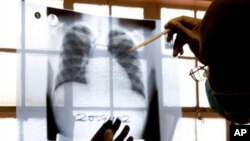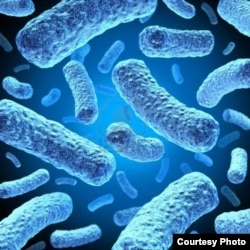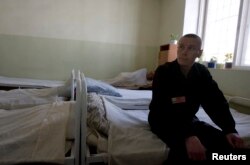The U.S. Centers for Disease Control and Prevention, or CDC, estimates 10 million people became sick and 1.5 million died in 2014 as a result of multi-drug-resistant tuberculosis. Without an effective and aggressive treatment strategy, the number of cases could rise to 75 million worldwide by 2050.
A new study concludes that a combination of at least six drugs may be needed to combat the growing health menace.
"If we don't act promptly, if we don't act now, then the problem of drug-resistant TB will just get worse," said Peter Cegielski, team leader for Drug-Resistant TB and Infection Control in the global TB branch at the CDC.
Cegielski says that when a person is infected with multi-drug-resistant — or MDR — TB, the bacterium that causes the disease does not respond to two gold-standard drugs for treating the illness: isoniazid and rifampicin.
So doctors turn to a cocktail of many more-expensive but less-effective drugs.
How many drugs should be in that cocktail was the focus of a study led by Cegielski.
Six over five
Currently, the World Health Organization recommends that five drugs be administered simultaneously.
But the study, conducted at 26 sites in nine countries, found that using six drugs could provide a necessary boost in efforts to defeat MDR-TB.
Participating countries included Russia, South Africa, Taiwan and Estonia.
Among the 1,100 adult patients in the study with MDR-TB, those who received six potentially effective drugs saw a 36 percent greater likelihood of responding to treatment compared with those who received five or fewer drugs. The findings were published in the journal PLoS Medicine.
Conducting pre-treatment testing also helped to determine which drugs were most likely to be effective against resistant TB infections, according to Cegielski.
"So, it was clear from this work that more testing for drug resistance, and especially testing for the full range of drug resistance, would be important so that physicians can choose the most effective drugs based on those laboratory results," he said.
The WHO is now encouraging doctors around the world to do drug-sensitivity testing prior to treating their MDR-TB patients, Cegielski said.
Meanwhile, the Obama administration unveiled an action plan to bring resources to bear in the prompt identification and treatment of patients infected with multi-drug-resistant tuberculosis.











